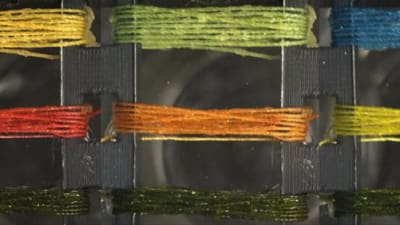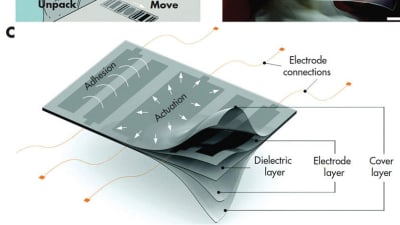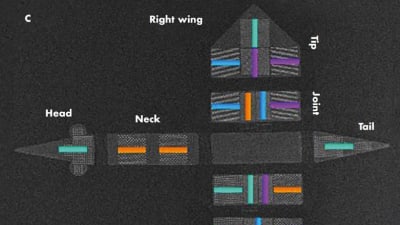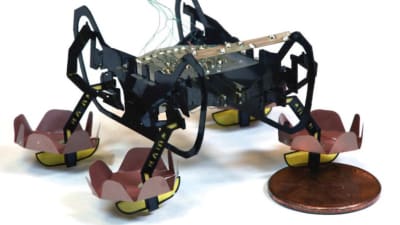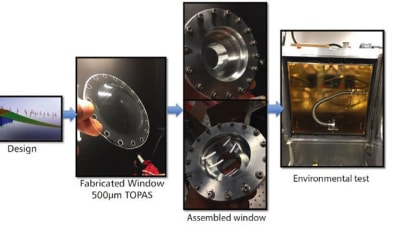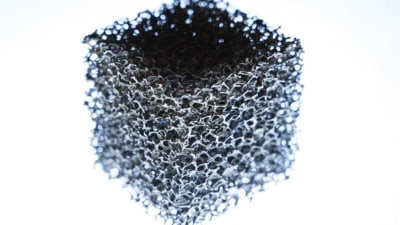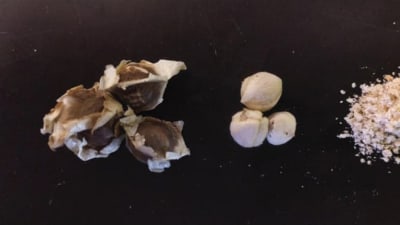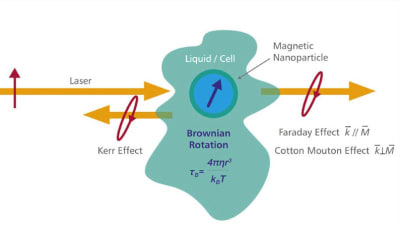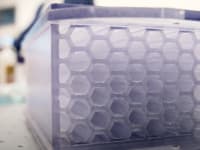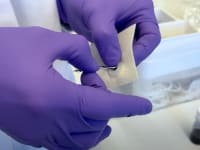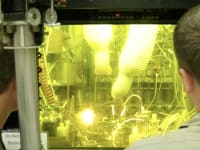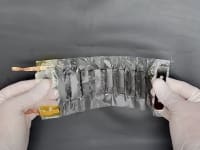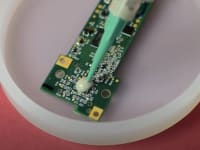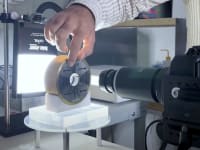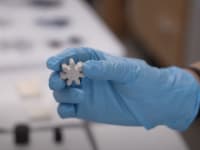38
61
169
-1
780
30
Briefs: Materials
The films could be used in impact-resistant glazing, windscreens, and displays.
Briefs: Defense
Equipment-free textile detectors could be used in public health, workplace safety, military, and rescue applications.
Briefs: Electronics & Computers
This technology could be used to create smartphones that don't scratch or shatter, metal-free pacemakers, and electronics for space and other harsh environments.
Briefs: Transportation
These soft robots can be rolled up and carried in a pocket.
Briefs: Photonics/Optics
Such machines, only a few tens of micrometers across, could be used in the human body to perform small operations.
Briefs: Photonics/Optics
A nanoantenna-enabled detector boosts the usable signal of a thermal infrared camera by up to three times.
Briefs: Software
The Planetary Tides Simulation Facility for Simulation Tidal Strain in Planetary Ice Analogs
Applications include modeling of tidal stress response of icy satellites as well as fatigue of terrestrial ice shelves.
Briefs: Green Design & Manufacturing
Chromium Removal from PVC Filters
The process does not cause any structural changes to the PVC filter membrane.
Briefs: IoMT
This electronic pill can relay diagnostic information or release drugs in response to smartphone commands.
Briefs: Materials
A carbon nanotube heat shield can better protect extremely fast aircraft.
Briefs: Electronics & Computers
These barrier coatings protect high-performance components in extreme environments.
Briefs: Materials
A solvent leaches cobalt and lithium for reuse from spent batteries.
Briefs: Test & Measurement
Interaction of sound and light reveals new information of a crystal's quantum properties.
Briefs: Robotics, Automation & Control
This microbot can walk on land, swim, and walk underwater.
Briefs: Manufacturing & Prototyping
Applying a surface-active agent makes metal easier to cut and shape into parts and pieces.
Briefs: Energy
These robust materials convert excess heat energy into electricity.
Briefs: Materials
This electronic skin can track heart rate, respiration, muscle movement, and other health data.
Briefs: Sensors/Data Acquisition
This thin film can be used for ground-based and airborne applications in aircraft, balloons, and other flight missions.
Briefs: Imaging
The non-destructive coating has applications in structural health monitoring, aerospace, automotive, and military/defense.
Briefs: Energy
This technology enables methane metabolism by yeast.
Briefs: Sensors/Data Acquisition
Ultra-thin SiC microstructures enable batch fabrication of MEMS, NEMS, pressure sensors, and biosensors.
Briefs: Materials
This plant-based material can be manufactured using water as a solvent instead of other harmful solvents.
Briefs: Manufacturing & Prototyping
Load-bearing structures in cars and airplanes could be manufactured from the metal foam.
Briefs: Mechanical & Fluid Systems
According to the United Nations, 2.1 billion people lack access to safely managed drinking water services and the majority live in developing nations. A process was developed...
Briefs: Sensors/Data Acquisition
This technology is a novel, rugged, and economic diagnostic and sensor platform technology.
Briefs: Electronics & Computers
The skin could help rehabilitation and enhance virtual reality by instantaneously adapting to a wearer's movements.
Briefs: Materials
Made with “Jenga chemistry,” the material could help in understanding how high-temperature superconductors work.
Briefs: Materials
This lightweight material brings strength and durability to complex shapes.
Briefs: Semiconductors & ICs
This hands-on, educational tool highlights the properties of SMA wire.
Top Stories
Blog: Manufacturing & Prototyping
2025 Holiday Gift Guide for Engineers: Tech, Tools, and Gadgets
INSIDER: Research Lab
Scientists Create Superconducting Semiconductor Material
Blog: Software
Quiz: Materials
Blog: Aerospace
Tech Briefs Wrapped 2025: Top 10 Technology Stories
Blog: Manufacturing & Prototyping
Webcasts
 Upcoming Webinars: AR/AI
Upcoming Webinars: AR/AI
The Real Impact of AR and AI in the Industrial Equipment Industry
 Upcoming Webinars: Motion Control
Upcoming Webinars: Motion Control
Next-Generation Linear and Rotary Stages: When Ultra Precision...
 Upcoming Webinars: Energy
Upcoming Webinars: Energy
Hydrogen Engines Are Heating Up for Heavy Duty
 Podcasts: Medical
Podcasts: Medical
How Wearables Are Enhancing Smart Drug Delivery
 Podcasts: Power
Podcasts: Power
SAE Automotive Podcast: Solid-State Batteries



